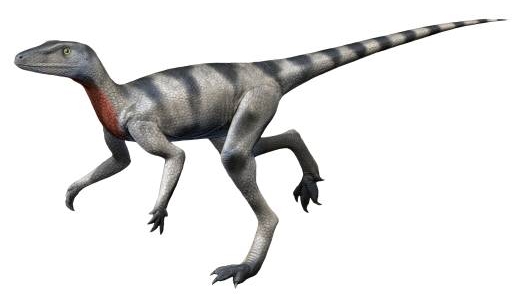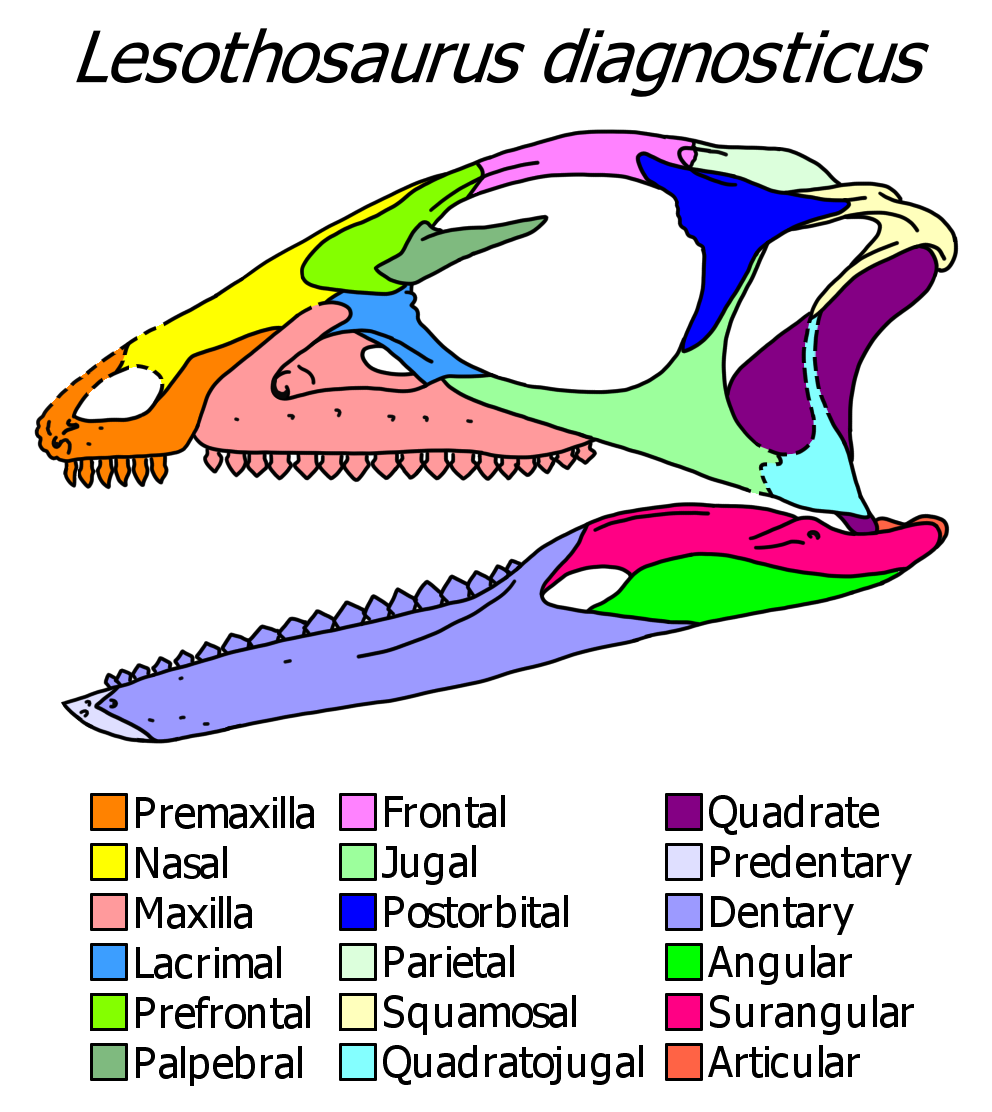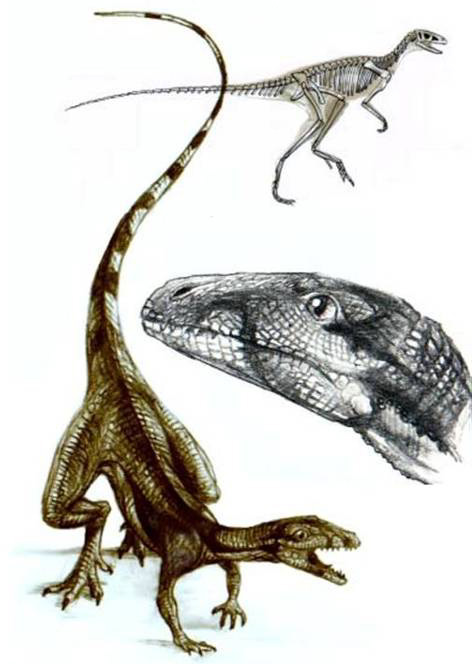|
Gamatavus
''Gamatavus'' (meaning "Picada do Gama great-grandfather") is a genus of silesaurid dinosauriform from the Middle Triassic Santa Maria Formation of Dilermando de Aguiar Municipality, Brazil. The genus contains a single species, ''G. antiquus'', known from a partial ilium. ''Gamatavus'' represents one of the oldest silesaurids known from South America, alongside the roughly coeval '' Gondwanax''. Discovery and naming The ''Gamatavus'' holotype specimen, UFSM 11348a, was discovered in the ''Dinodontosaurus'' Assemblage Zone of the Santa Maria Formation (‘Picada do Gama’ site), dated to the Ladinian–early Carnian stages of the Middle Triassic. It consists of a partial right ilium. A partial left femur and four incomplete vertebrae were found in association with the holotype, but they were not assigned to ''Gamatavus''. In 2022, Pretto et al. described ''Gamatavus antiquus'' as a new genus and species of silesaurid based on these remains. The generic name, "''Gamatav ... [...More Info...] [...Related Items...] OR: [Wikipedia] [Google] [Baidu] |
Gondwanax
''Gondwanax'' (meaning "lord of Gondwana") is an extinct genus of silesaurid dinosauriform from the Triassic Pinheiros-Chiniquá Sequence of Brazil. The genus contains a single species, ''G. paraisensis'', known from a partial skeleton. ''Gondwanax'' represents one of the oldest known dinosauromorphs, and, alongside the roughly coeval ''Gamatavus'', one of the oldest South American silesaurs. While the possession of two sacral vertebrae characterizes more basal "silesaurid" taxa, ''Gondwanax'' has three—the oldest occurrence of this trait in the fossil record. Discovery and naming The ''Gondwanax'' fossil material was discovered in 2014 by physician and paleontology enthusiast Pedro L. P. Aurelio at the "Linha Várzea 2" ("Becker") site, belonging to the Pinheiros-Chiniquá Sequence of the Santa Maria Supersequence (Formation) in Paraíso do Sul municipality of Rio Grande do Sul, Brazil. These layers are representative of the ''Dinodontosaurus'' Assemblage Zone. He subse ... [...More Info...] [...Related Items...] OR: [Wikipedia] [Google] [Baidu] |
Santa Maria Formation
The Santa Maria Formation is a sedimentary rock formation found in Rio Grande do Sul, Brazil. It is primarily Carnian in age (Late Triassic), and is notable for its fossils of cynodonts, " rauisuchian" pseudosuchians, and early dinosaurs and other dinosauromorphs, including the herrerasaurid '' Staurikosaurus'', the basal sauropodomorphs '' Buriolestes'' and ''Saturnalia,'' and the lagerpetid '' Ixalerpeton''. The formation is named after the city of Santa Maria in the central region of Rio Grande do Sul, where outcrops were first studied. The Santa Maria Formation makes up the majority of the Santa Maria Supersequence, which extends through the entire Late Triassic. The Santa Maria Supersequence is divided into four geological sequences, separated from each other by short unconformities. The first two of these sequences (Pinheiros-Chiniquá and Santa Cruz sequences) lie entirely within the Santa Maria Formation, while the third (the Candelária sequence) is shared with the ... [...More Info...] [...Related Items...] OR: [Wikipedia] [Google] [Baidu] |
Silesaurid
Silesauridae is an extinct family of Triassic dinosauriforms. It is most commonly considered to be a clade of non-dinosaur dinosauriforms, and the sister group of dinosaurs. Some studies have instead suggested that most or all silesaurids comprised an early diverging clade or a paraphyletic grade within ornithischian dinosaurs. Silesaurids have a consistent general body plan, with a fairly long neck and legs and possibly quadrupedal habits, but most silesaurids are heavily fragmentary nonetheless. Furthermore, they occupied a variety of ecological niches, with early silesaurids (such as '' Lewisuchus'') being carnivorous and later taxa (such as ''Kwanasaurus'') having adaptations for specialized herbivory. As indicated by the contents of referred coprolites, ''Silesaurus'' may have been insectivorous, feeding selectively on small beetles and other arthropods. Classification Silesauridae is typically considered the sister group to Dinosauria. The group was named in 2010 by Max ... [...More Info...] [...Related Items...] OR: [Wikipedia] [Google] [Baidu] |
Ornithischia
Ornithischia () is an extinct clade of mainly herbivorous dinosaurs characterized by a pelvic structure superficially similar to that of birds. The name ''Ornithischia'', or "bird-hipped", reflects this similarity and is derived from the Greek stem ' (), meaning "bird", and ' (), meaning "hip". However, as theropod dinosaurs, birds are only distantly related to this group. Ornithischians with well known anatomical adaptations include the ceratopsians or "horn-faced" dinosaurs (e.g. ''Triceratops''), the pachycephalosaurs or "thick-headed" dinosaurs, the armored dinosaurs ( Thyreophora) such as stegosaurs and ankylosaurs, and the ornithopods. There is strong evidence that certain groups of ornithischians lived in herds, often segregated by age group, with juveniles forming their own flocks separate from adults. Some were at least partially covered in filamentous (hair- or feather- like) pelts, and there is much debate over whether these filaments found in specimens of '' Ti ... [...More Info...] [...Related Items...] OR: [Wikipedia] [Google] [Baidu] |
2022 In Archosaur Paleontology
This article records new taxa of fossil archosaurs of every kind Binomial nomenclature, described during the year 2022, as well as other significant discoveries and events related to paleontology of archosaurs that occurred in 2022. Pseudosuchians New pseudosuchian taxa General pseudosuchian research * A study on the mandible embryogenesis in extant caimans, and on its implications for the knowledge of the evolution of postdentary lower jaw of pseudosuchians, is published by Bona ''et al.'' (2022). * A study on the musculature of crocodylian and fossil suchian jaws, investigating the impact of the flattening of the skulls of suchians in their evolutionary history on their muscle anatomy, is published by Sellers ''et al.'' (2022). * Revision of ''Tsylmosuchus donensis'' and ''Scythosuchus basileus'' is published by Sennikov (2022), who interprets the latter taxon as a Synonym (taxonomy), junior synonym of the former one, and interprets ''T. donensis'' as a likely member o ... [...More Info...] [...Related Items...] OR: [Wikipedia] [Google] [Baidu] |
Middle Triassic
In the geologic timescale, the Middle Triassic is the second of three epoch (geology), epochs of the Triassic period (geology), period or the middle of three series (stratigraphy), series in which the Triassic system (stratigraphy), system is divided in chronostratigraphy. The Middle Triassic spans the time between annum, Ma and Ma (million years ago). It is preceded by the Early Triassic Epoch and followed by the Late Triassic Epoch. The Middle Triassic is divided into the Anisian and Ladinian age (geology), ages or stage (stratigraphy), stages. Formerly the middle series in the Triassic was also known as Muschelkalk. This name is now only used for a specific unit of stratum, rock strata with approximately Middle Triassic age, found in western Europe. Middle Triassic life Following the Permian–Triassic extinction event, the most devastating of all mass-extinctions, life recovered slowly. In the Middle Triassic, many groups of organisms reached higher diversity again, s ... [...More Info...] [...Related Items...] OR: [Wikipedia] [Google] [Baidu] |
Specific Name (zoology)
In zoological nomenclature, the specific name (also specific epithet, species epithet, or epitheton) is the second part (the second name) within the scientific name of a species (a binomen). The first part of the name of a species is the name of the genus or the generic name. The rules and regulations governing the giving of a new species name are explained in the article species description. For example, the scientific name for humans is ''Homo sapiens'', which is the species name, consisting of two names: ''Homo'' is the " generic name" (the name of the genus) and ''sapiens'' is the "specific name". Etymology Historically, ''specific name'' referred to the combination of what are now called the generic and specific names. Carl Linnaeus, who formalized binomial nomenclature, made explicit distinctions between specific, generic, and trivial names. The generic name was that of the genus, the first in the binomial, the trivial name was the second name in the binomial, and the ... [...More Info...] [...Related Items...] OR: [Wikipedia] [Google] [Baidu] |
Dinosauromorpha
Dinosauromorpha is a clade of avemetatarsalians ( archosaurs closer to birds than to crocodilians) that includes the Dinosauria (dinosaurs) and some of their close relatives. It was originally defined to include dinosauriforms and lagerpetids, with later formulations specifically excluding pterosaurs from the group. Birds are the only dinosauromorphs which survive to the present day. Classification The name "Dinosauromorpha" was briefly coined by Michael J. Benton in 1985. It was considered an alternative name for the group "Ornithosuchia", which was named by Jacques Gauthier to correspond to archosaurs closer to dinosaurs than to crocodilians. Although "Ornithosuchia" was later recognized as a misnomer (since ornithosuchids are now considered closer to crocodilians than to dinosaurs), it was still a more popular term than Dinosauromorpha in the 1980s. The group encompassed by Gauthier's "Ornithosuchia" and Benton's "Dinosauromorpha" is now given the name Avemetatarsalia ... [...More Info...] [...Related Items...] OR: [Wikipedia] [Google] [Baidu] |
Lagosuchus
''Lagosuchus'' is an extinct genus of avemetatarsalian archosaur from the Late Triassic of Argentina. The type species of ''Lagosuchus'', ''Lagosuchus talampayensis'', is based on a small partial skeleton recovered from the early Carnian-age Chañares Formation. The holotype skeleton of ''L. talampayensis'' is fairly fragmentary, but it does possess some traits suggesting that ''Lagosuchus'' was a probable dinosauriform, closely related to dinosaurs. A second potential species of ''Lagosuchus'', ''L. lilloensis'', is based on an assortment of slightly larger and more well-preserved fossils. These larger specimens have been considered much more diagnostic and informative than the original small ''L. talampayensis'' skeleton. As a result, some paleontologists have placed the larger specimens into a new genus, ''Marasuchus''. ''Marasuchus'' is generally considered one of the more complete early dinosauriforms, useful for estimating ancestral traits for the origin of dinosaurs. This ... [...More Info...] [...Related Items...] OR: [Wikipedia] [Google] [Baidu] |
Lewisuchus
''Lewisuchus'' is a genus of archosaur that lived during the Late Triassic (early Carnian). As a silesaurid dinosauriform, it was a member of the group of reptiles most commonly considered to be the closest relatives of dinosaurs (possibly true dinosaurs themselves). ''Lewisuchus'' was about long. Fossils have been found in the Chañares Formation of Argentina. It exhibited osteoderms along its back. History The first remains of ''Lewisuchus'' were discovered in a 1964-1965 joint expedition by the Museo de La Plata and Harvard's Museum of Comparative Zoology. These remains were preserved in a carbonate nodule recovered from the Chañares Formation of Argentina. It contained a partial skeleton of ''Lewisuchus'', including parts of the skull, braincase, many vertebrae, scapulocoracoids, humeri, and tibiae. A gomphodont and bones from several other species of archosaurs were also preserved in the same nodule. An isolated lower jaw and foot bones were also initially refer ... [...More Info...] [...Related Items...] OR: [Wikipedia] [Google] [Baidu] |
Lutungutali
''Lutungutali'' (meaning "high hip" in the Bemba language) is an extinct genus of silesaurid dinosauriform from the Middle Triassic of Zambia. The single type species of the genus is ''Lutungutali sitwensis''. ''Lutungutali'' was named in 2013 and described from a fossil specimen, holotype NHCC LB32, including hip bones and tail vertebrae. The specimen was collected in 2009 from the upper Ntawere Formation, which dates to the Anisian stage of the Middle Triassic. ''Lutungutali'' is the first known silesaurid from Zambia and, along with the Tanzanian silesaurid '' Asilisaurus'' and dinosauriform ''Nyasasaurus'', the oldest bird-line archosaur known from body fossils (i.e. parts of the skeleton). Description ''Lutungutali'' is known from parts of its pelvis and from four caudal vertebrae that make up the base of the tail. These bones represent one individual, although bones that may belong to ''Lutungutali'' representing eight other individuals were collected from the same fossi ... [...More Info...] [...Related Items...] OR: [Wikipedia] [Google] [Baidu] |





